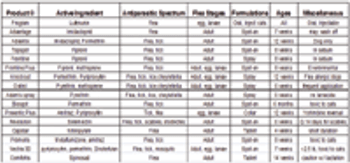
Feline alopecia is a common dermatologic presentation because of the overt clinical findings observed by the owner. Alopecia can broadly be categorized into traumatic induced, hair follicle/shaft damage, and hair cycle abnormalities.

Feline alopecia is a common dermatologic presentation because of the overt clinical findings observed by the owner. Alopecia can broadly be categorized into traumatic induced, hair follicle/shaft damage, and hair cycle abnormalities.

Some of the most common canine cutaneous tumors include: histiocytoma, mast cell tumor, and the adnexal tumors. Cutaneous T-cell lymphoma (mycosis fungoides) is a pruritic neoplasia of older dogs with a poor prognosis.

Dermatophyte fungal infection remains as one of the most over-diagnosed and under-diagnosed diseases in dogs and cats. The clinical presentation may be variable and can even resemble neoplasia.

Feline otitis can be a challenging clinical problem. A commonly used clinical approach to treatment of canine otitis rarely yields satisfactory results when applied to cats.

We are fortunate to have a plethora of outstanding antiparasitic agents. In deciding upon which products to place on the shelf, several characteristics must be considered. The purpose of the presentation is to compare many of the available products, citing advantages and disadvantages.

Published: May 1st 2011 | Updated:

Published: May 1st 2011 | Updated:

Published: May 1st 2011 | Updated:

Published: May 1st 2011 | Updated:

Published: May 1st 2011 | Updated: